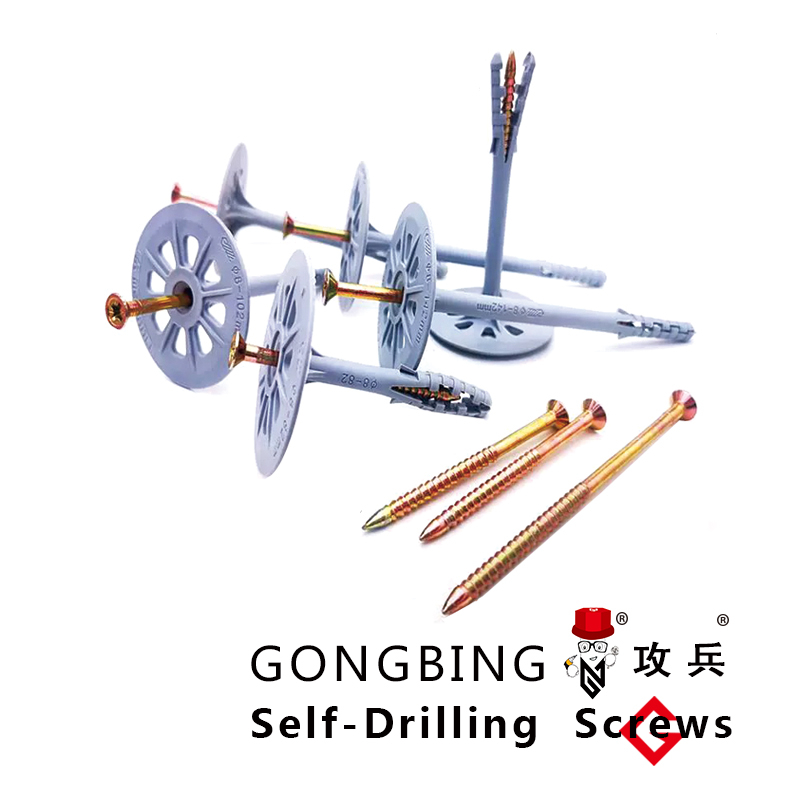Hex Head Timber Screws for Secure Wood Joinery and Construction Applications
Understanding Timber Screws A Guide to Hex Head Timber Screws
Timber screws, particularly those with hex heads, are essential tools in the woodworking and construction industries. Their unique design and construction make them highly effective for joining wooden materials and providing superior holding power. This article will delve into the features, benefits, and applications of hex head timber screws, offering insights that will help both professionals and DIY enthusiasts make informed decisions.
What Are Timber Screws?
Timber screws are specially designed screws used for fastening wood to other wood materials, or wood to metal and other substrates. They differ from traditional screws in their design, with a fully threaded shaft that allows for better grip and stability. The hex head design features a hexagonal shape, enabling the use of a wrench or socket for driving, which can provide greater torque and reduce slipping compared to a slotted or Phillips head.
Advantages of Hex Head Timber Screws
1. Increased Torque The hexagonal shape of the head allows for a better grip with a wrench or socket, enabling users to apply more torque without damaging the screw or the wood. This is particularly beneficial in applications requiring a strong connection.
2. Enhanced Holding Power Hex head timber screws are designed with deeper threads and a sharp point, enabling them to penetrate the wood effectively. This results in superior holding power, reducing the likelihood of loosening over time, which is crucial for structural integrity.
3. Ease of Use Unlike traditional screws, which often require a bit for driving, hex head screws can be driven using a ratchet or wrench. This can lead to faster assembly times and reduced fatigue when working on large projects.
4. Versatility Timber screws are suitable for a variety of wood types, including hardwoods and softwoods. Their ability to handle heavy loads makes them ideal for outdoor projects such as decking, fencing, and garden structures.
timber screw hex head

5. Corrosion Resistance Many hex head timber screws are coated with materials like zinc or painted with weather-resistant finishes, making them suitable for outdoor applications. This corrosion resistance ensures longevity, even in harsh weather conditions.
Applications
The uses of hex head timber screws are vast and varied. Here are some common applications
- Decking When constructing outdoor decks, hex head timber screws are preferred due to their strength and ability to withstand the elements. They ensure that the decking boards are securely fastened, providing stability and safety.
- Fencing For wooden fences, hex head screws can help in securing panels and posts firmly, ensuring that the fence stands strong against wind and other environmental factors.
- Furniture Assembly In woodworking and furniture making, hex head screws are often used because they can bear significant weight and provide a clean finish without visible fasteners.
- Truss and Frame Construction In larger structural applications, such as trusses in roofs, hex head timber screws provide the necessary strength to support heavy loads and structural integrity.
Conclusion
Hex head timber screws are invaluable components in woodworking and construction. Their design allows for increased torque, enhanced holding power, and versatility across various applications, making them a top choice for professionals and DIYers alike. Whether you are building a deck, assembling furniture, or constructing a fence, choosing the right timber screws can greatly affect the strength and durability of your project. Always remember to select screws that are suitable for the materials you are working with and to use the appropriate tools for the best results. With hex head timber screws in your toolkit, you can ensure that your woodworking and construction projects are both sturdy and reliable.
-
Weatherproof Plastic Expansion Anchors for OutdoorNewsJun.06,2025
-
Sustainability in the Supply Chain: Eco-Friendly TEK Screws ProductionNewsJun.06,2025
-
Load-Bearing Capacity of External Insulation FixingsNewsJun.06,2025
-
Double Head Bolts: Enhancing Efficiency in Industrial MachineryNewsJun.06,2025
-
Corrosion Resistance in Chipboard Screws: Coatings for Wholesale DurabilityNewsJun.06,2025
-
Butterfly Toggle Bolts : Enhancing Structural ResilienceNewsJun.06,2025
